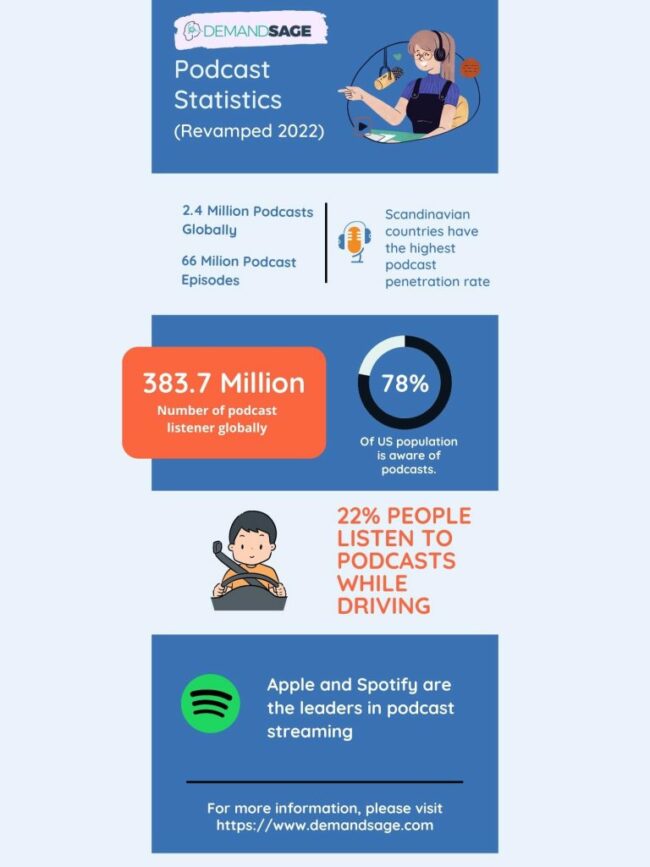Most companies share one glaring thing in common: they could use a lot more leads.

But beyond anecdotal evidence that I’ve gained from running Credo over the last six odd years and as a paid acquisition specialist for over 15 years, the numbers certainly confirm this unsurprising truism.
That is, numbers gleaned from our industry survey of over 300 digital marketing agencies, in which we asked them what the number one way is that Credo could help improve their business.
The answers were clear:
More qualified leads
More qualified clients who have the kinds of businesses I serve
More leads
As the industry’s premier digital matchmaker, we are in the business of connecting brands and agencies–i.e. we generate leads. Understanding the value of this first-hand experience, it felt appropriate to share the lead generation strategies that work well for our business (and our clients) so that you can apply them to your business.
So if you’re serious about growing your business and getting more leads, you’ve come to the right place. Whether you’re in healthcare, SaaS, or a digital marketing agency, let’s talk lead generation.
Table of Contents
What’s a Lead?
As a quick primer, let’s talk about what we mean by a “lead”.
There are many levels of leads:
- An initial lead–which is most often generated via a content upgrade or similar (such as a quiz)–is essentially an email address or phone number;
- A marketing qualified lead (MQL)–which is a lead that is more engaged on your site, maybe downloads multiple pieces of content, and ultimately contacts you about your services or for a demo (depending on your offer);
- A sales qualified lead (SQL)–which is a marketing qualified lead that has spoken with the sales team and is deemed to be qualified to be taken down the sales funnel and ultimately to become a customer.
In this article, we are mostly going to discuss initial leads, as the MQLs and SQLs usually require a combination of channels and touchpoints from a real human. Though every year, automation helps streamline this process.
Without initial leads, of course, you can’t get MQLs and then turn those into SQLs. Initial leads are the prerequisites for more qualified leads and conversions further down the road.
Here are the lead generation strategies we’ll cover:
- SEO (search engine optimization)
- Consistent editorial content
- Content with proprietary data
- Content upgrades
- Guest posting
- Dominate your search results using other sites
- Be a podcast guest
- Incentive-based referral programs
- Organic social media
- Build an email list
- Hold webinars
- Throw an online summit
- Try live chat
- Social media advertising
- Niche conference sponsorships
- Podcast advertising
- Local event sponsorships
- Join a (paid) mastermind
- Simplify your landing pages
- Invest in a copywriting course
- Build your brand
- Leverage case studies
- Speak at conferences
- Write a book
- Invest in less popular content types
For easier digestibility, we’ve broken them up into three sections:
Organic Lead Generation Strategies
First, let’s cover organic lead generation strategies. While these take a bit longer to get tangible results than paid strategies, they are also more consistent and don’t require a constant input of ad spend to provide value.
Of course, even “free” channels require an investment of time. If you really want to scale your content then publishing them on your social channels with ad spend, for instance, keeps more eyes on those posts.
Let’s cover each strategy individually!
Search engine optimization
Everyone talks about SEO, and that’s because it is still the most effective way to drive leads online. In many industries, SEO traffic is still the number one driver of volume. Plus, it converts extremely well to paying customers.
SEO can seem like a black box, but it doesn’t have to be.
In its simplest form, SEO is comprised of three things:
- Solid technical SEO;
- Solid keyword research and content;
- Promotion (including link building)
With SEO, you can target specific keywords that are relevant to your product or business to drive traffic to those pages that can convert into paying customers (or demos–whatever your metric is).
Consistent editorial content
See content marketing companies here
Content marketing is a great way to build both organic traffic and leads.
Content marketing gives allows you to create more pages throughout your customer’s buying journey. Then, you can capture your ideal customers near the top of your funnel–increasing your pool of leads to convert.
There are over 7.5 million blog posts published every day, which means that there is a lot of content out there.
Lucky for you, a lot of it is slapdash and unhelpful to the intended audience. Posting a blog just to look active is no kind of strategy and can actually hurt your SEO with Google’s new Helpful Content updates.
If you can consistently produce helpful content aimed at your target customers, you will see more leads. It’s a time investment, but one that can pay huge dividends when done right over a consistent period of time.
In fact, here is our traffic to content (by month) since January 1, 2017:

If you want an example of a single piece of content that produces a ton of backlinks, take a look at the number of links Moz’s Beginner’s Guide to SEO has:
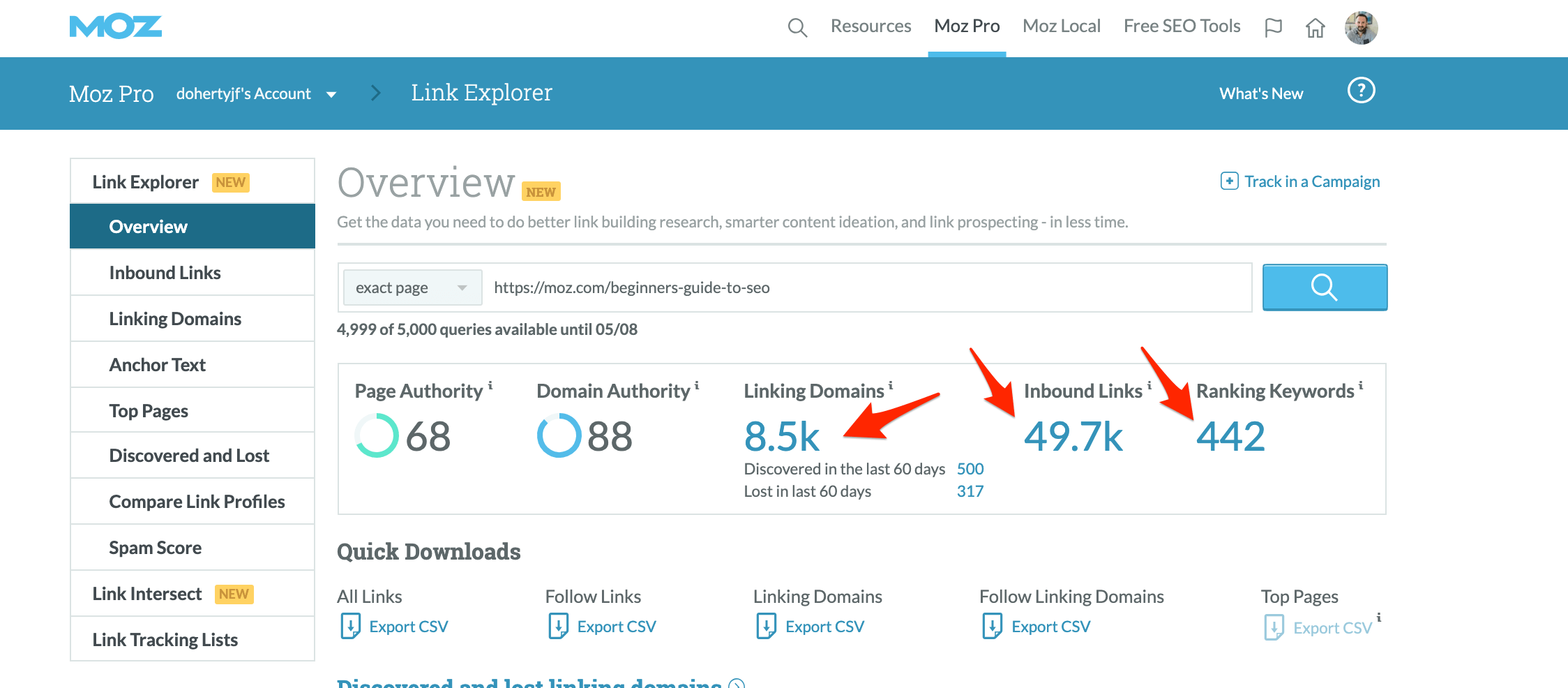
Proprietary data (surveys and internal data)
Speaking of content, one of the best ways to build links and your brand with content is by analyzing and publishing your in-house data. Too many companies lock up insightfu–sometimes fascinating–data sets.
If you have an audience that is interested in your product or service, they are likely interested in your data. People love to peel back the layers. Why not attract them with something they can’t find anywhere else?
There is power in empowering your customers and teaching them something. As HubSpot’s Flywheel represents, you attract your audience, then engage, and then delight them with the answer to the problem your brand solves.
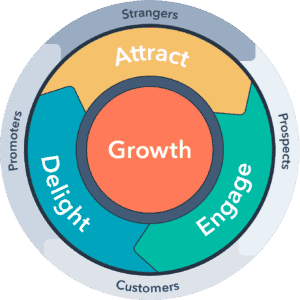
This is why we invested in our digital marketing pricing survey, which as you can see below has had over 30,000 visitors and 53,000+ pageviews since it first launched in February 2017.
It’s been copied and replicated many times, but ours remains the industry standard.
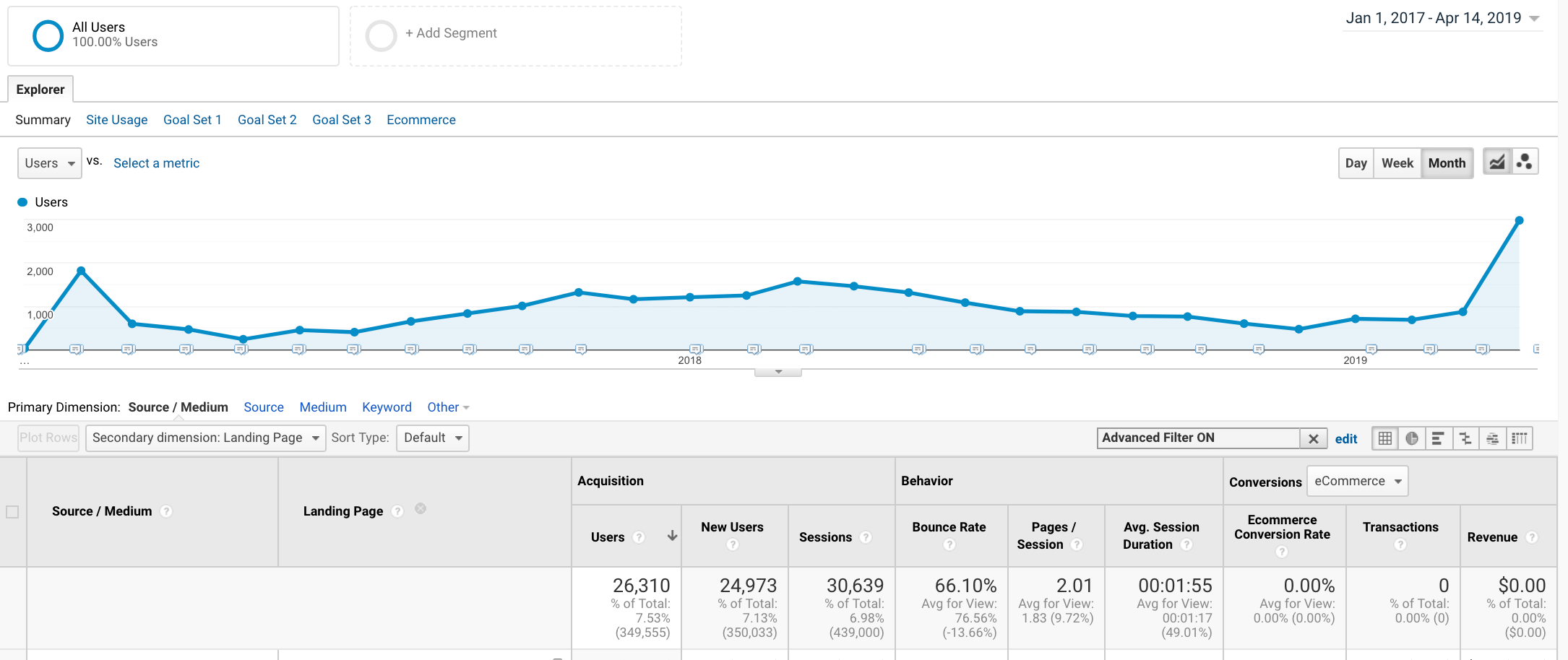
Content upgrades
You’re thinking: “So I write content to get traffic but how does that turn into leads?”
Enter, the content upgrade.
Once you have a piece of content driving high traffic, you layer on a piece of content that is only available in exchange for an email address. A squeeze page like this can be a lead generation magnet.
Say you are a local plumber and write a piece of content for “how to fix a leaky faucet”. That piece of content starts ranking well on Google.
Next, you can create an “FIY [Fix It YourSelf]: 5 Most Common Bathroom Issues” PDF. Take that PDF and put it into your favorite email software (we’ve used both MailChimp and Drip here at Credo). Their built-in forms that you can add to your piece of content are fantastic–highly suggest incorporating those!
This one has received over 100 email addresses in the last couple of weeks:
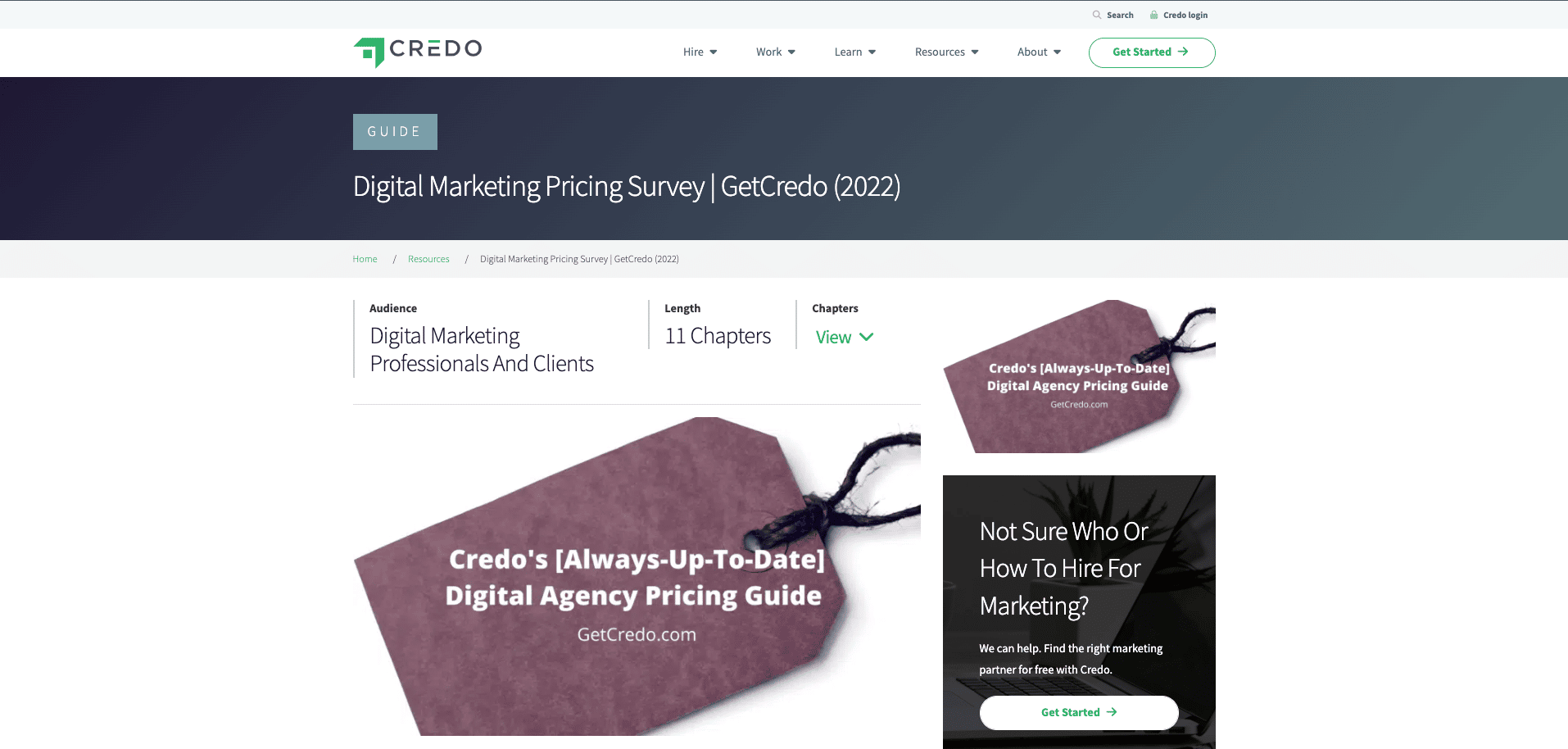
Guest posting
Another great way to engage in content marketing and build links back to your website is guest blogging.
That is, writing content and posting it on someone else’s website because it adds value to that site’s audience and that audience will also be interested in your website and what you have to offer.
Now, this isn’t just writing a piece of content and cold emailing asking to publish it somewhere. That usually not going to work out well. Save your time and energy–don’t do that.
Instead, go out and connect with others in your industry (especially if a tech company) who also have blogs. After an amount of time, ask them to guest post on your site. Then, later on, ask if you can publish a piece on their blog.
You gained a new connection in your industry and should gain some of their audience. That is a great link-building strategy, which can absolutely drive more leads.
Dominate your search results using other sites
Let’s say you want to rank for the term “best hr software”.
Here’s the search result once you get below the 4 paid ads (which take up the whole screen on a 15″ laptop):
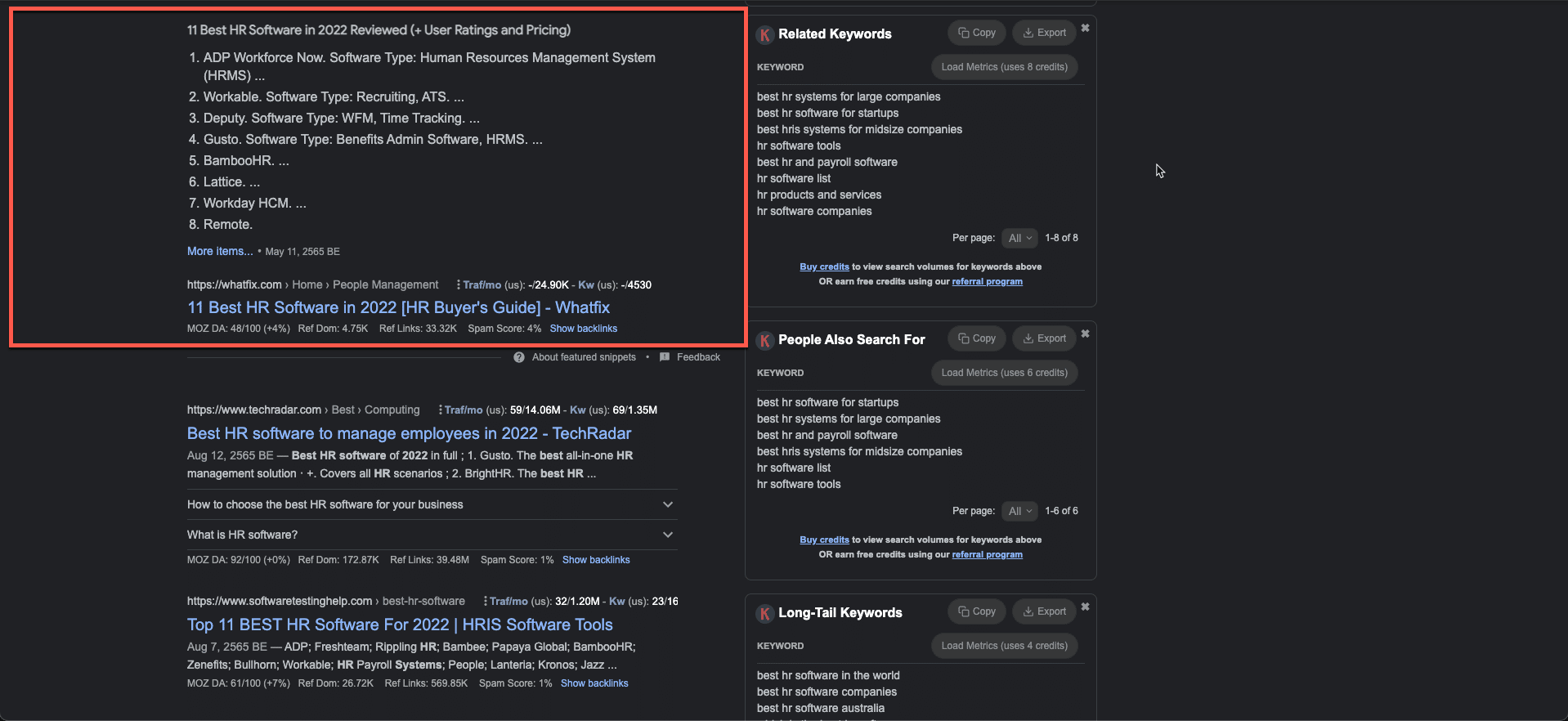
Would it not make sense to reach out to Whatfix and get listed there in the top 8 so that your site shows up at the top for your main keyword?
Sure, it is ideal if your website ranks for the term itself. You can work towards that over time. But, say, it’s a competitive term. Realistically, it can take a few years to rank for this specific term, since it seems Google thinks this term deserves roundups, lists, or other Rich Snippets:
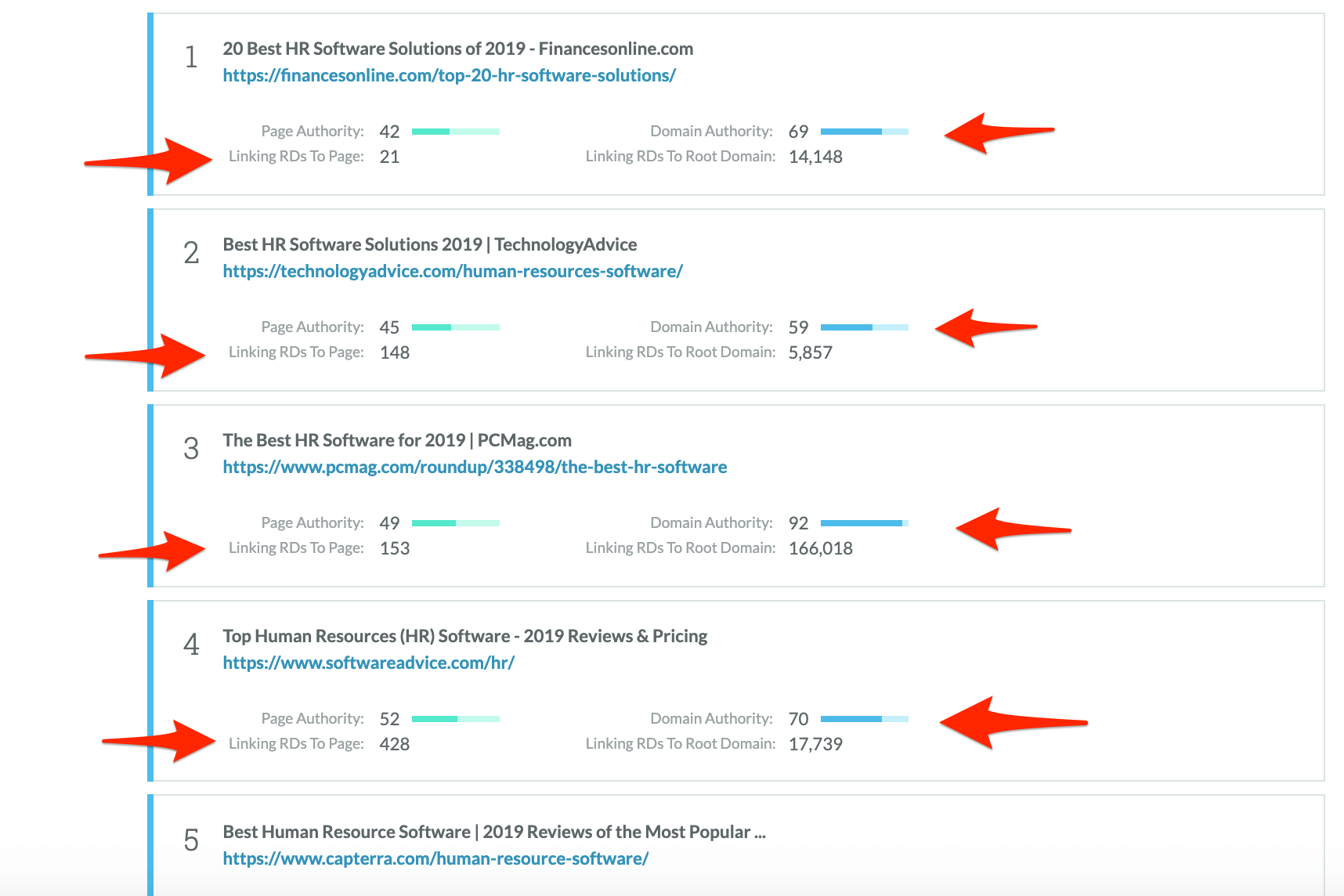
But if you can be in the ‘Top 5’ on all of those lists, that’s money in the bank.
Be a podcast guest
Podcasting is on a meteoric rise, with over 2.4 million active podcasts in 2022. That’s up nearly 200% from 2019 when there were about 700,000 shows–up from 550,000 in June 2018. That’s seriously exponential growth.
I have personally found CredoCast (our own podcast–check it out!) and being a podcast guest to be a great way to build my audience and connect with others in a format other than writing.
Before I get into how to become a podcast guest, I want to make clear that you should be a subject matter expert (SME) in your area. It also helps to have an interesting story to tell and to be willing to be transparent with business numbers, hard lessons learned, and to share things they haven’t heard before.
Be humble, thoughtful, and straightforward. Genuine is rare these days and it goes far.
Also, podcasting isn’t big in every industry. If you’re a small business owner then there are small business podcasts, so think broader than just your niche (HR, for instance) and consider what others will identify within your story.
There are a few ways to approach being on a podcast:
- Make friends with those who run them, then ask if they are looking for guests;
- Pitch them an interesting story with you as their guest.
I’ve been able to leverage my name and experience (all built through content marketing) to be on over 60 podcasts.
So how do you turn podcasts into leads?
There are a couple of ways.
First, on podcasts, you can offer the listeners something like a cheat sheet or a downloadable resource guide. Most guests ask where people can find you, so you can reference it in the description (another great way to build links).
Second, they are hopefully referring people to your site. From there you can retarget them on Facebook or offer a content upgrade–or discount–on the page. This works especially well for ecommerce stores or local businesses.
Incentive-based referral programs
Sometimes you have to pay to get referrals, and if your business model supports it then building an incentive-based referral program (sometimes known as an “affiliate program”) can return big dividends for your company.
These programs work great for all sorts of companies, including:
- Software
- Local
- Ecommerce
The program will look different for each, but here are a few ideas:
- If a software company, then a true affiliate program where you pay a percentage of the sale or lifetime value to the person referring the customer to you;
- If a local company, give a customer $25 off their next service for referring a new customer their way;
- If an ecommerce company, give a percentage of the sale.
Organic social media
When marketing professionals talk about social media, it’s usually in the context of paid social media in the form of advertising on various social media channels.
But when business owners or non-marketers talk about social media, it’s usually organic social media. We receive a fair few clients at Credo looking for “organic social media posting”.
The right strategy is usually a combination of the two, but the reality is that organic social media has become more difficult to make work effectively (depending on your niche and type of business). On any social media platform, you need an exceptionally dedicated audience to keep traction with only organic posts.
Here’s an example in the evangelical content space, where Pinterest has been a great acquisition channel for referrals in the past. But in recent years has been more difficult to leverage:
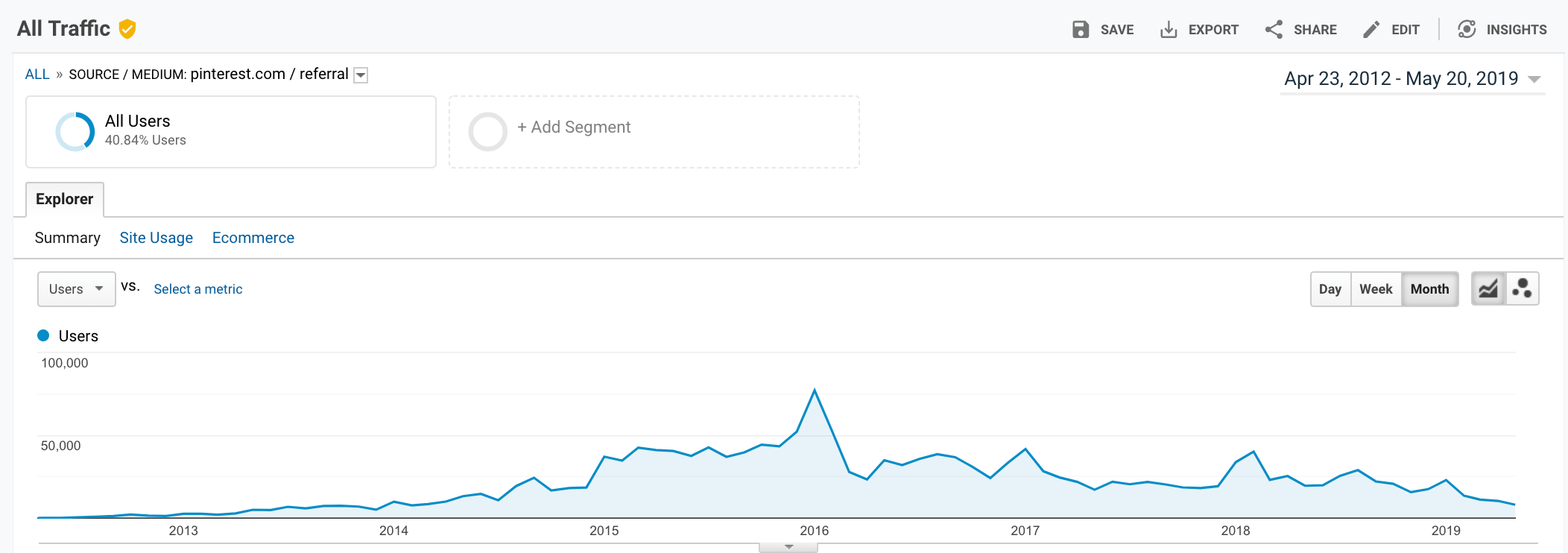
While not a B2B company, this shows the challenge that even the most female and visual-focused companies (77% of Pinterest users are women) are having a hard time driving traffic and leads from organic content alone.
But does this mean that you should not be investing in building an organic audience for your business?
Definitely not, but the strategies and reasons to do it have changed over the years.
First, your social media accounts should not be the main place that people interact with your brand. If you build your brand on someone else’s platform, at some point they will reclaim that platform in order to monetize it.
Just look at what Facebook has done with organic reach for groups.
Second, you can automate a lot of your organic social media posting using tools like Buffer or MeetEdgar. While this is great for automatically sharing new content or updates posted elsewhere, it is not sufficient for building a following on social media channels as that comes from engaging with others.
People do business with people. You need to interact and engage with customer questions and feedback. Again, be genuine with how you engage your audience and personalize the experience. Don’t be an automated robot.
Third, choose your channels wisely. B2B businesses should invest in LinkedIn without a doubt–and likely Facebook. Ecommerce brands should invest in Facebook and Instagram, and probably Pinterest.
To drive leads from organic social, you need three things:
- An engaged audience;
- Consistent value-adding content;
- A consistent cadence of posting, while also not overwhelming them.
The most important thing to keep in mind with organic social is that you want to take that audience you’ve built there (on that social platform) and convert them into something you own (an email list) so that you are future-proofing yourself from any platform changes or meltdowns.
You can control your messaging more carefully and get into their inbox more directly. With the slew of data and privacy policy changes in recent years (with more to come), you need to have direct control over your data.
Build an email list
Continuing on from the above, email has consistently been one of the most profitable channels for businesses.

While email marketing is not a top-of-funnel lead acquisition strategy, getting someone onto your email list is technically a lead. It can be a very effective Lead -> MQL or MQL -> SQL strategy for B2B businesses.
Bonus strategy: email as an acquisition strategy
Now, if you want to turn email into an acquisition channel there is indeed a strategy for doing that.
It involves creating best-in-class content, then do outreach to those who run the largest newsletters in your industry and ask them to include it in their newsletter! This can drive thousands of visitors to your site in good situations, and if you then offer a content upgrade from there you can gain pre-qualified leads as new email subscribers.
Hold webinars
This one dovetails well with the above of building an email list. But to get SQLs and MQLs you have to provide outsized value to people of value.
One of the best ways to do this is by basically doing a conference presentation online–a webinar, basically.
Now, the real “trick” to being successful with webinars is not to make it a veiled pitch for something else that seems to be legit and just value-adding, but is actually just a hard selll.
People see right through that. Everyone has signed up for a lot of webinars and then not attended them, or stuck around for just a few minutes because it’s all about you.
Instead, make it all about them. I can’t stress how important this is to keep in mind!
Provide as much value as you can in return for their email address. You’re not trying to monetize them directly! You have their email address, so you can monetize them later. Think of it like this: there was an exchange of goods
Webinars should be only to teach, and possibly to point them to something of even more value to learn from.
Try live chat
This one is more tactical, but can be useful depending on your company.
For example, here’s how Backcountry.com does it:

And most SaaS companies do it, such as Proposify:
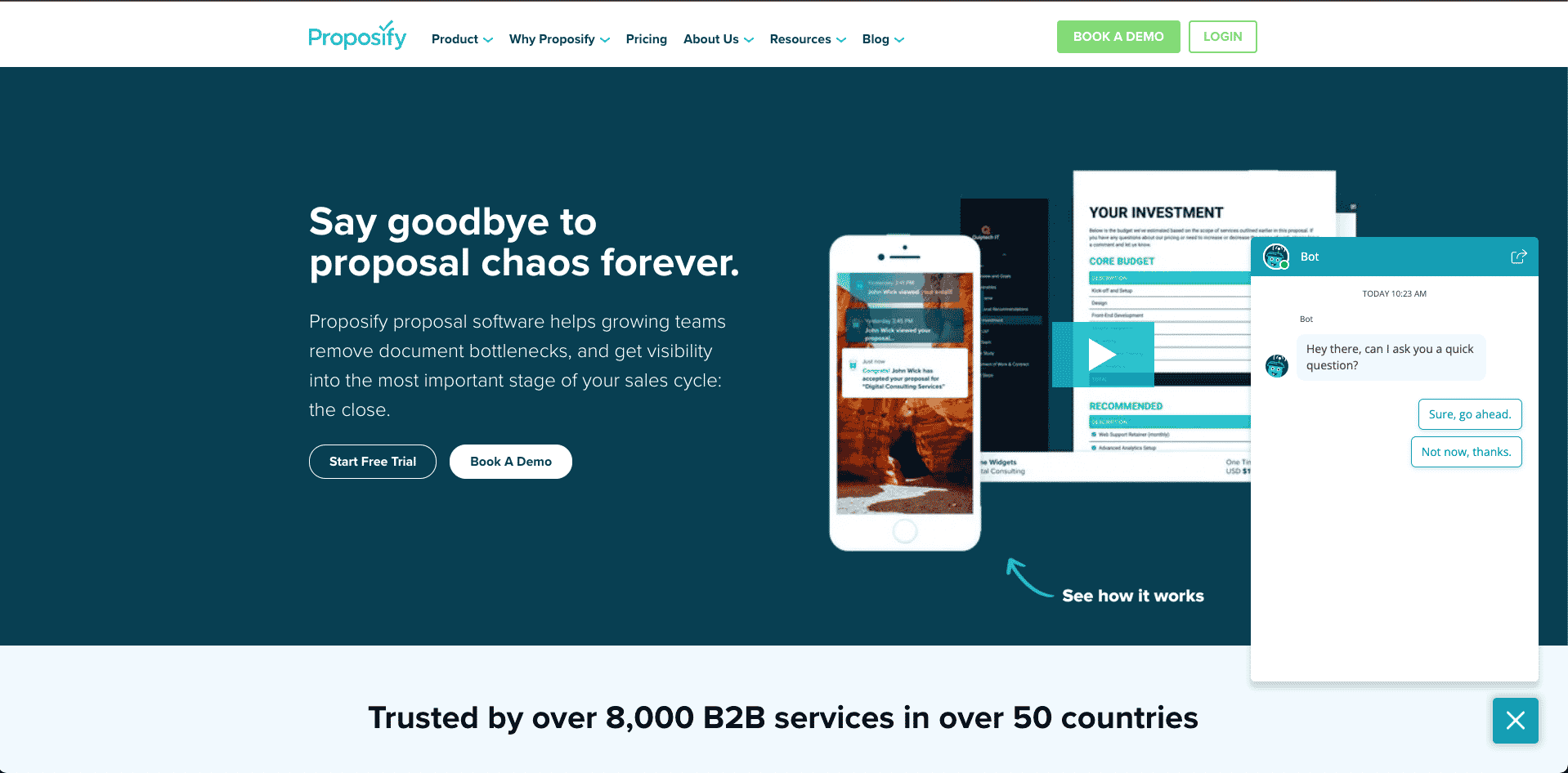
Live chat can be a great way to save people who are bouncing or have additional questions.
I’ve used it on Credo before, but I felt tied to my business as opposed to being free to do the right things to grow the business. If you have someone to manage chat responses, this can be a huge benefit for your potential customers. Of course, there is AI for everything these days–and AI chatbots are only getting more intuitive.
Just tread lightly with automating this strategy. You don’t want to lose that personal touch.
Make the right decision for your own business.
Paid Lead Generation Strategies
Now let’s look at some paid lead generation strategies that you can try. If they work, you can then double down on them.
Social media advertising
We talked about organic social media earlier, so this is the paid side of advertising your business.
First, let’s make it clear that your audience is on social media. I don’t care if you’re selling blue widgets or multiple six-figure parking systems–your customers are on social media.
They might not be on every social media platform, but they are at a minimum on Facebook (because mostly everyone is). They might be on Instagram, they might be on Twitter, and they might be on Pinterest.
You need to learn where they are first before you start spending money.
Now that we have that settled, let’s talk about social media advertising.
At a minimum, you should be doing retargeting, which is advertising to people who have been on your website, reminding them of their interest in your product or service, and increasing your chances of conversion.
I primarily do this on Facebook, but you can also do it on Google and places like Instagram.
Niche conference sponsorships
Conferences can be a great way to get in front of your target audience. Depending on the size, you can sometimes get these fairly cheap and get a lot of exposure to everyone at the conference.
I say “niche” because you should have a specific offer for each audience and have a direct way to track if someone is coming from that conference so that you can track a return on that investment.
But that said, it is often very hard to track ROI from conferences. I’ve sponsored a few conferences (and plan to do more) and always went into them with the mindset of getting at least one customer.
Why one? That would pay for the whole sponsorship. The aim is more but breaking even with increased brand exposure is worth the effort.
You should view conference sponsorships as a branding exercise. It’s amazing how sponsoring conferences puts your brand to another level where enterprise brands are more likely to trust you.
Podcast advertising
Podcasts and voice-driven content are some of the hottest and fastest growing types of media today.
As mentioned earlier, podcasts have a captive audience and most advertising done on them is read by the host, giving it an authentic feel. This can be a great way to get in front of a captive and engaged audience.
It’s basically niche conference advertising on steroids, and is easily trackable if you send listeners to a specific landing page only heard on that podcast!
Local event sponsorships
If you’re a local business, sponsoring a local event can be a great way to get your brand out there and known. It’ll be relatively cheap, and your physical presence there will mean the world to the audience.
Join a (paid) mastermind
This one is a bit outside the box, but I firmly believe that as your business grows you need to get access to people who are doing big things that can teach you, promote you, and more.
Sometimes that means paying for access to their time. Successful people are busy people, and often they won’t just give you their time for free.
If they offer paid coaching or a mastermind or an in-person event, then I recommend paying for it and going. Even 15 minutes of face time with that person can change the trajectory of your business.
The connections you make with others there can be very impactful for your business! Network, network, network.
Long-Term Strategies For Leads
Finally, there are some longer-term strategies that you should consider to increase your leads.
Simplify your landing pages
Many of us who create digital content tend to over-explain. Plus, it doesn’t help that we’re told that you need to create more content in order to rank better on Google and drive traffic.
While that can often be true (though sometimes not, depending on the intent of the page), there are studies on both sides of the “more or less” content debate about what converts better.
So I’m not necessarily talking about more or less content, but when we talk about “simplifying” your landing pages it is simplifying and focusing your messaging around the main topic and goal of the page.
If you’re trying to generate form submits for high-ticket consulting, then everything needs to be around building trust and showing that you can solve their problem. Keep it simple and straightforward as possible.
If you’re an ecommerce company selling keychains, you need to not be cluttering the page with ads with CTAs (calls to action) all over the page. Have a goal in mind for that specific landing page and stick to it, strictly!
Simplify your message and your design, and you’ll win.
Invest in a copywriting course
Good copy can be one of the highest leverage parts of your website. The difference between good and bad copy can be literally hundreds of thousands of dollars based on conversions and the quality of those conversions.
If you’re not a copywriter or comfortable writing, then you should invest in a copywriting course. I have learned a ton from the copywriters in my life and continue to learn as I write more content and operate online.
For example, Brian Dean from Backlinko, offers his time-tested tips on how to approach this task:
Learning how to write great copy in your customer’s words will return your investment many times over.
Also fortunately there are many good free resources out there, too:
- Ultimate guide to email copywriting
- How to write copy that will blow your reader’s mind
- How to Cash in with Copy and Turn Casual Visitors into Paying Customers with Joel Klettke
Build your brand
“Build your brand” might be viewed as nebulous or unhelpful advice, but that doesn’t mean it’s not true.
Rand Fishkin, not only a friend of mine but SME on conversions, talks in detail about this:
Building a brand that has more search volume than all the unbranded keywords combined. https://t.co/GmvuAHWX6V
— Rand Fishkin (@randfish) June 14, 2018
Aim to build a brand with more search volume than your main non-branded keywords, like so:

Or a tech-specific example:

Someone I worked for used to talk about making their employees famous, which was good for the employees and good for the company.
So how do you build a brand that people love talking about and which then makes it much easier to generate new leads and clients–and revenue?
Well, there is a whole genre about branding, and the two best books I know of are Designing Brand Identity and What Great Brands Do.
In a nutshell, to build a brand you need a combination of:
- A product people love;
- Longevity in the space to become known–i.e. The Lindy Effect;
- A personality that people are attracted to;
- A brand voice that people interact with;
- A specific culture/cultural value that resonates;
- Consistency across products, teams, and messaging.
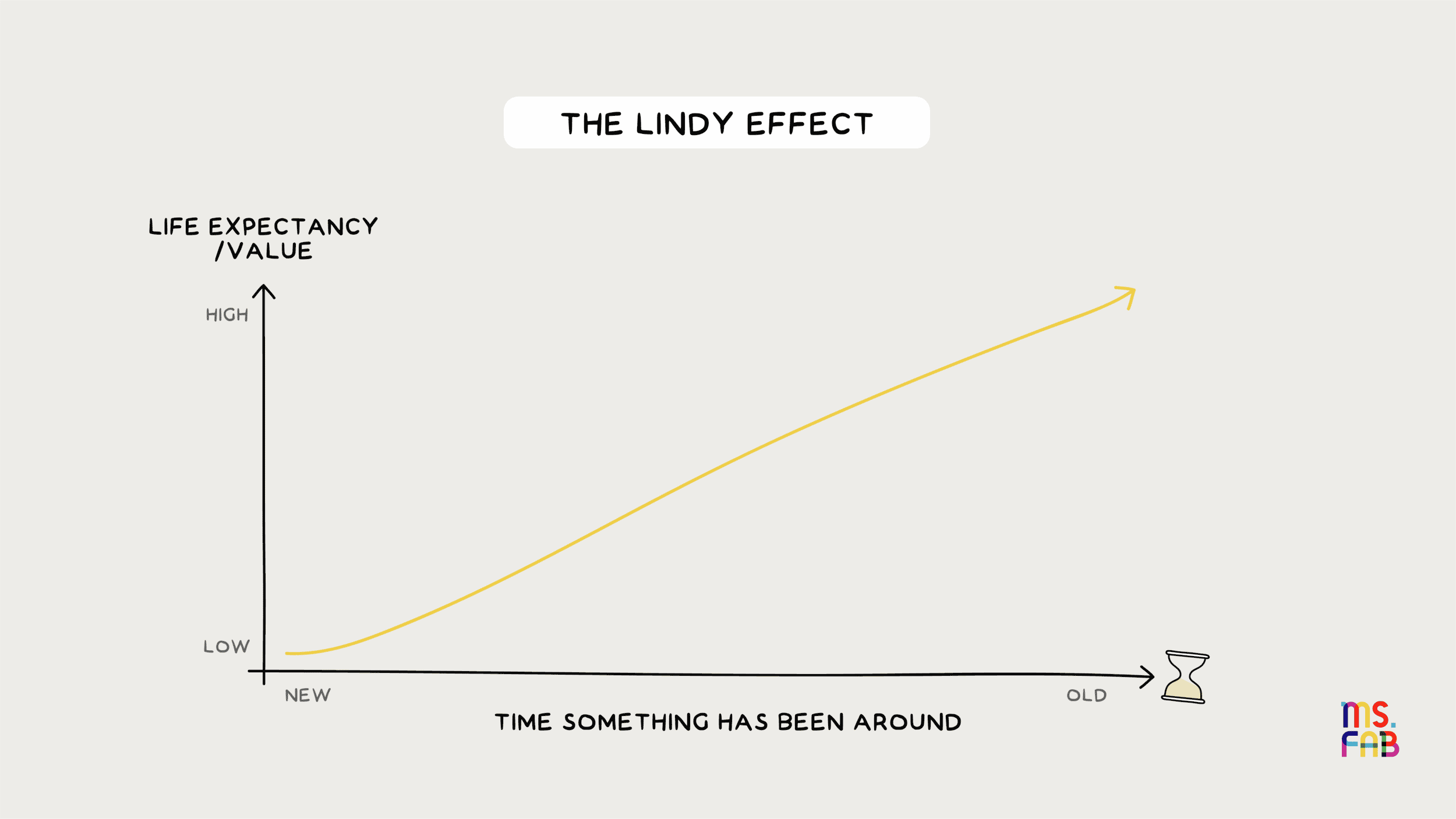
Building a brand is very hard to do and takes quite a bit of time. But if you invest in it then it is the strongest flywheel you can have to generate leads, customers, and revenue.
Leverage case studies
Case studies show what your company does and who you do it for. They show your successes and how your business achieves those successes for your customers or clients.
This is akin to using your internal data, as previously covered.
Especially with high-ticket items like consulting, case studies help your site visitors understand what you do, who you do it for, and what you can do for them.
Similar to an About page, case studies don’t directly generate leads for you but they do indirectly because more of your site visitors will understand what you do and will be comfortable contacting you.
Speak at conferences
Conferences can be a great way to build your personal and company brand, and if done well then you can get directly in front of your target customers as an authority that can help them solve their biggest problems.
Similar to sponsoring conferences, speaking at a conference shows your expertise.
Speaking at conferences isn’t for everyone, but if it is for you and you are able to get speaking slots (either through invites, sponsorships, or pitching).
This can be a powerful way to be seen as an SME and build more trust–leading to more leads–for your business.
Write a book
Continuing in the vein of building authority, writing a book is (according to many) the single best way to help others see you as the authority that you are on the topic about which you write.
Writing a book is a huge investment, especially if you go through the process of hiring an editor and doing revisions and then properly marketing it to the world. Thus, this is a long-term strategy because it takes time to do it right.
It is possible to write a book more quickly and with Amazon’s publishing tools you can easily publish it in digital format. There are also many self-publishing tools available for print-on-demand setups for books from indie authors, so that is another route you can go to get your message out to the world.
Invest in less popular content types
Finally, if you want to stand out from the crowd in your industry then you should investigate creating content using different content mediums than others.
For example, if everyone in your industry is writing short text-heavy blog posts then you should write longer and image-rich posts.
If everyone is just creating content, then maybe you should investigate creating videos or graphics that convey the message in different ways.
If no one in your industry is really investing in social media (especially things like Instagram Stories), then that could be an advantage you can exploit.
The point here is: to be different to stand out and see quicker success.
Want a hand with creating your own lead generation magnet? These specialists are standing by!

